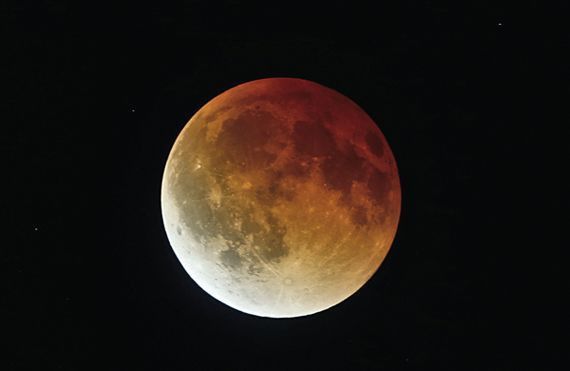This article first appeared in the CHRISTIAN RESEARCH JOURNAL, volume 37, number 02 (2014). The full text of this article in PDF format can be obtained by clicking here. For further information or to subscribe to the CHRISTIAN RESEARCH JOURNAL go to: http://www.equip.org/christian-research-journal/
Popular instructional literature on Christian eschatology (the end times) tends to follow a certain prescribed formula. Writers who adhere to the dispensational model of eschatology typically present standard teachings concerning the “rapture” (an ascent of all Christians into heaven as Jesus returns to earth), a seven-year tribulation period, and an Antichrist figure. These elements are repeatedly repackaged around a premise that some recent or imminent historical event is a signal that eschatological events are soon to follow. This event could be the advent of a political leader, some great disaster, or the threat of a pandemic. The only limits are the writer’s imagination.
John Hagee, pastor of San Antonio’s Cornerstone Church, is a master of this formula. Over the past fifteen years, he has produced nearly a dozen books on eschatology. Several featured a newsworthy event as a focal point that supposedly served as a sign that biblical prophecy was about to be fulfilled. In his book The Beginning of the End (Thomas Nelson, 1996), the assassination of Israeli Prime Minister Yitzhak Rabin was the designated sign. In From Daniel to Doomsday (Thomas Nelson, 1999), the focus was the Y2K bug. Financial Armageddon (Front Line, 2008) anticipated that the current economic recession was the beginning of the end.
Now, with Four Blood Moons (Worthy Publishing, 2013), Hagee has discovered a new sign that “something is about to change.” The period between April 15, 2014, and September 28, 2015, will bear witness to four total lunar eclipses, or “blood moons,” along with a single total solar eclipse. According to Hagee, three past examples of this combination of stellar events are “linked to significant Jewish history” (p. 173). Thus, he concludes that the eclipses in 2014–2015 will also align with some significant event in Jewish history.
What will that significant event be? The implied thrust of the book, with its formulaic reiteration of popular eschatological teachings, is that the four blood moons (or the Tetrad, as he calls it) will have something to do with end-times prophecy. Approximately 80 percent of Four Blood Moons consists of reiteration of dispensational eschatological teachings. These teachings have been critiqued in depth elsewhere, including by Christian Research Institute President Hank Hanegraaff, so we will not discuss them further here.1 Instead, we will critically analyze Hagee’s unique claims in Four Blood Moons, in which he argues that the Tetrad is a divine sign.
BLOOD ON THE MOON
A lunar eclipse occurs when the Earth is interposed between the moon and sun, casting Earth’s shadow onto the moon’s surface. It is sometimes called a “blood moon” because the shadow of a total lunar eclipse has a reddish tinge, making the moon appear as though it were soaked in blood.
Eclipses are referred to several times in Scripture in eschatological terms. One reference is Joel 2:31: “The sun shall be turned into darkness, and the moon into blood, before the great and the terrible day of the LORD come” (KJV).
Other references to eclipses (e.g., Matt. 24:29, Acts 2:20, Rev. 6:12) echo Joel’s words. According to Hagee, these eclipses are a “high-definition billboard” (18) that can signal an impending judgment of God.
Does God Use Stellar Signs? Is Hagee justified in suggesting that stellar events can be so interpreted? He rightly draws a distinction between the occult practice of astrology, and the interpretation of stellar phenomena as signs from God (17–18). God certainly has the ability, as well as the sovereign right, to maintain and use His creation any way He pleases (Ps. 24:1). So Hagee is correct to suggest the theoretical possibility that stellar phenomena may be used by God as a prophetic signal.
He is also correct to say (38–39) that the star of Bethlehem (Matt. 2) may have qualified as such a signal.2 Biblical peoples frequently thought that stars and other stellar objects signified some great event, such as the birth of a king. God operated within this framework to provide a message that could be widely understood to indicate that the birth of the Messiah had occurred.
Problems with His Philosophy. Is Hagee therefore justified in appealing to Joel 2:31 and its parallels as referring to a similar signal? An initial problem is that none of the passages specifically describes the occurrence of multiple eclipses. If these passages are to be interpreted literally, only one solar and one lunar eclipse each are the sign to be provided—not one solar eclipse and four lunar eclipses. Further, these eclipses are said to indicate a coming judgment of God, not a “significant event in Jewish history.”
It is also questionable whether these passages are meant to describe literal stellar events. In the biblical world, stellar symbols were used to represent nations, rulers, and peoples, just like the stars on the American flag represent states. The message of Joel 2:31 and the parallels would therefore concern political upheavals and judgments on nations, rather than being predictions of literal astronomical events. This is an option Hagee fails to consider.3
Hagee is also too eager to understand stellar events as “divine billboards.” He appeals to the February 2013 appearance of a meteor over Russia, which caused a shockwave that resulted in hundreds of injuries and significant local property damage. But why should this meteor have been taken as a “supernatural Fed Ex message” (22)? Hagee gives us no reason to think so, other than that a local priest called it an “act of God,” and that the meteor was a spectacular sight as it descended (21). Nor can he adequately explain what content this “message” was supposed to have been relating. Hagee supposes that it was a message to Russia, as an atheistic nation, that “I am God, and there is none like Me” (22–23). But what about this event related such a specific message? As Hanegraaff rightly points out in his comments on Four Blood Moons, for a sign to be prophetic, people need to know why it is a sign when it appears.4 An anecdotal account of a single priest calling it an “act of God” (not a “message from God”) is insufficient justification.
A STELLAR COINCIDENCE?
The next question is whether the upcoming Tetrad is indeed anything unusual. According to Hagee, what should grab our attention is not merely that the Tetrad involves four lunar eclipses and a single solar eclipse within a period of eighteen months, but that the lunar eclipses occur on Jewish festival dates: Passover twice and the Feast of Tabernacles twice. Hagee further stresses that three past Tetrads (AD 1492–93, AD 1949–50, and AD 1967–68) had the same characteristics, and were associated with significant events in Jewish history.
It must first be said that there is nothing unusual about a lunar eclipse taking place at the time of a Jewish festival. Jewish festivals coincide with full moons, and lunar eclipses only occur during full moons. It is therefore inevitable that some Jewish festival dates will correspond with lunar eclipses.5
The occurrence of Tetrads upon Jewish festivals is admittedly rarer. Astronomy writer Bruce McClure, however, lists four earlier Tetrads with the same correspondence with Jewish festivals (AD 162–63, AD 795–96, AD 842–43, and AD 860–61).6 Total solar eclipses also occurred within each of those ranges, satisfying Hagee’s requirements.7 Thus it is not as much of a rarity as Hagee suggests.
A Sight Unseen?
Another problem that faces Hagee’s interpretation is that relatively few people see a solar or lunar eclipse. Hagee would have us believe that these signs are meant as a message to the entire world. But the 2015 solar eclipse’s path takes it over a remote portion of the North Atlantic and Arctic oceans, with only the Faroe Islands and the island of Svalbard along the way. Fewer than fifty thousand people inhabit these islands, which are difficult to reach and are subject to cloud cover, especially in March when the Arctic winter still affects the region. Surely if Hagee were right about this being a sign from God, it would be visible to far more people. A similar problem attends each of the lunar eclipses, which will only be seen by a limited number of Earth’s population. Furthermore, although the Tetrad is allegedly of great significance to Israel, only one of the four lunar eclipses in 2014–2015 will be visible in that nation.8
What’s Significant?
The next question is whether Hagee correctly finds meaningful correspondence between Tetrads and “significant” events in Jewish history. In statistical terms, this is highly open to question. Hagee does nothing to define what he means by “significant.” This leaves him with a wide ability to select any event involving Jewish persons and term it “significant.”
Hagee also claims that each past Tetrad “began with a trail of tears and ended with triumph for the Jewish people” (225). An initial problem with this claim is that Hagee ignores all Tetrads prior to AD 1492, and so ties no “significant” event to any of them. Beyond that, Hagee selects three events that occurred during the three Tetrads since AD 1492: the expulsion of Jews from Spain (AD 1493–94), the founding of the state of Israel (AD 1949–50), and the Six-Day War (AD 1967–68). But how successful are these ties Hagee makes between stellar and historical events?
The expulsion from Spain was undoubtedly significant in historical terms. But it only affected a small portion of Jews alive at the time. In addition, equally significant expulsions of Jews occurred in France in AD 1182, in Switzerland in AD 1622, and a number of other European nations during the Middle Ages. It is hard to explain why the expulsion from Spain should be regarded as any more meaningful.
The second Tetrad offers the most tenuous connection suggested by Hagee. Although he goes into some detail discussing the founding of Israel in 1948, he does not name any significant event that occurred during the span of the Tetrad (1949–1950)!
The 1967–1968 Tetrad is arguably a success for Hagee, given the connection to the Six-Day War. But the significance of the correspondence is undermined by the fact that many significant events in Jewish history, including many that affected greater numbers of Jewish people, were not accompanied by a Tetrad. Surely if any event could be regarded as significant in Jewish history, it would be the Holocaust. Yet not one year of that tragic period (1933–1945 AD) was marked by a Tetrad. Another significant event was the occurrence of pogroms (violent attacks) on Jews in Russia during the nineteenth century. These attacks sparked worldwide outrage, but by Hagee’s reckoning, the heavens were strangely silent about them.
Hagee also unconvincingly ties judgments of God on America to Sabbatical years. He connects the World Trade Center disaster to the Sabbatical year of 2001, and the economic recession to the Sabbatical year of 2008. But what events would he name for prior Sabbatical years? Surely he would not argue that America was any less given over to “idols of self-indulgence and greed” (50) in those years. Later (234) he names events during Sabbatical years that he claims were God’s way of getting “our undivided attention.” For example, for 1973, he selects the Roe v. Wade decision. But if Hagee’s criteria are this expandable, how difficult would it be to find a suitable attention-getting event in any year? If 2004 had been a Sabbatical year, Hagee could have chosen the tsunami that devastated Indonesia. Or, in 2005, he could have chosen Hurricane Katrina.
Hank Hanegraaff’s description of Four Blood Moons as “magic apologetics”9 is entirely appropriate. Hagee enacts the role of the stage magician, performing a shell game in which one event after another is presented as “the” event that will signify an end to all things. Sadly, it is likely that many readers will continue to fall for Hagee’s hucksterism: in order for Hagee to succeed in his latest predictions, all that is required is for some “significant” event to occur in the given eighteen-month period (April 2014–September 2015) involving the state of Israel. Given the perpetual turmoil in the Middle East, Hagee has practically set the bar of evidence low enough to guarantee that he receives a passing grade.
James Patrick Holding is president of Tekton Apologetics Ministries and author of Jesus Was a Mushroom and Other Lies You Won’t Believe (Amazon Kindle).
NOTES
- Hank Hanegraaff, The Apocalypse Code (Nashville: Thomas Nelson, 2010).
- There is some debate over the nature of the star of Bethlehem. It has been variously understood to have been a comet, a supernova, a planetary conjunction, or even a unique supernatural event. Discussions may be found in Lee Strobel, The Case for Christmas (Grand Rapids: Zondervan, 2005), 50; Craig Keener, A Commentary on the Gospel of Matthew (Grand Rapids: Eerdmans, 1999), 100–103, and T. Michael Davis, “The Star of Bethlehem,” Christian Research Journal 30, 6 (2007).
- An excellent discussion of this point is found in N. T. Wright, Jesus and the Victory of God (Minneapolis: Fortress, 1996), 354–60.
- Hanegraaff made this point on the Bible Answer Man broadcast of January 21, 2014, http://www.equip.org/audio/revelation-4-qa/.
- Astronomer Danny Faulkner observes that of 230 lunar eclipses that occurred in the twentieth century, 37 of them, or one-sixth, occurred on Jewish festival dates. Danny Faulkner, “Will Lunar Eclipses Cause Four Blood Moons in 2014 and 2015?” http://www.answersingenesis.org/articles/2013/07/12/lunar-eclipses-cause-blood-moons.
- Bruce McClure, “What Is a Blood Moon?” http://earthsky.org/space/what-is-a-blood-moon- lunar-eclipses-2014-2015#tetrad.
- http://eclipse.gsfc.nasa.gov/SEatlas/SEatlas1/SEatlas0161.GIF (AD September 16, 163); http://eclipse.gsfc.nasa.gov/SEatlas/SEatlas1/SEatlas0781.GIF (AD March 14, 796); http://eclipse.gsfc.nasa.gov/SEatlas/SEatlas1/SEatlas0841.GIF (AD October 7, 842, and AD October 18, 860).
- McClure, “What Is a Blood Moon?”
- Hank Hanegraaff, Bible Answer Man, January 21, 2014.










